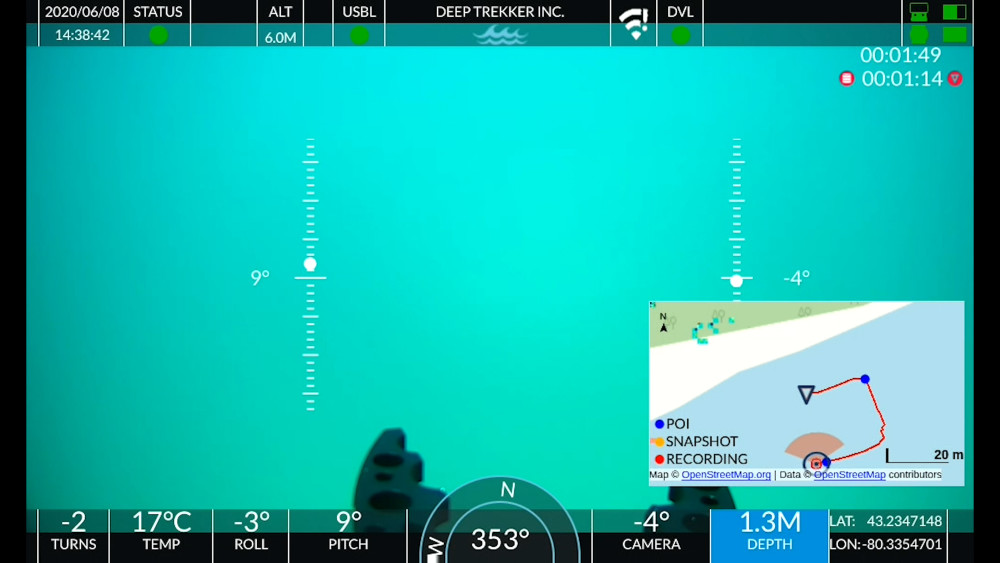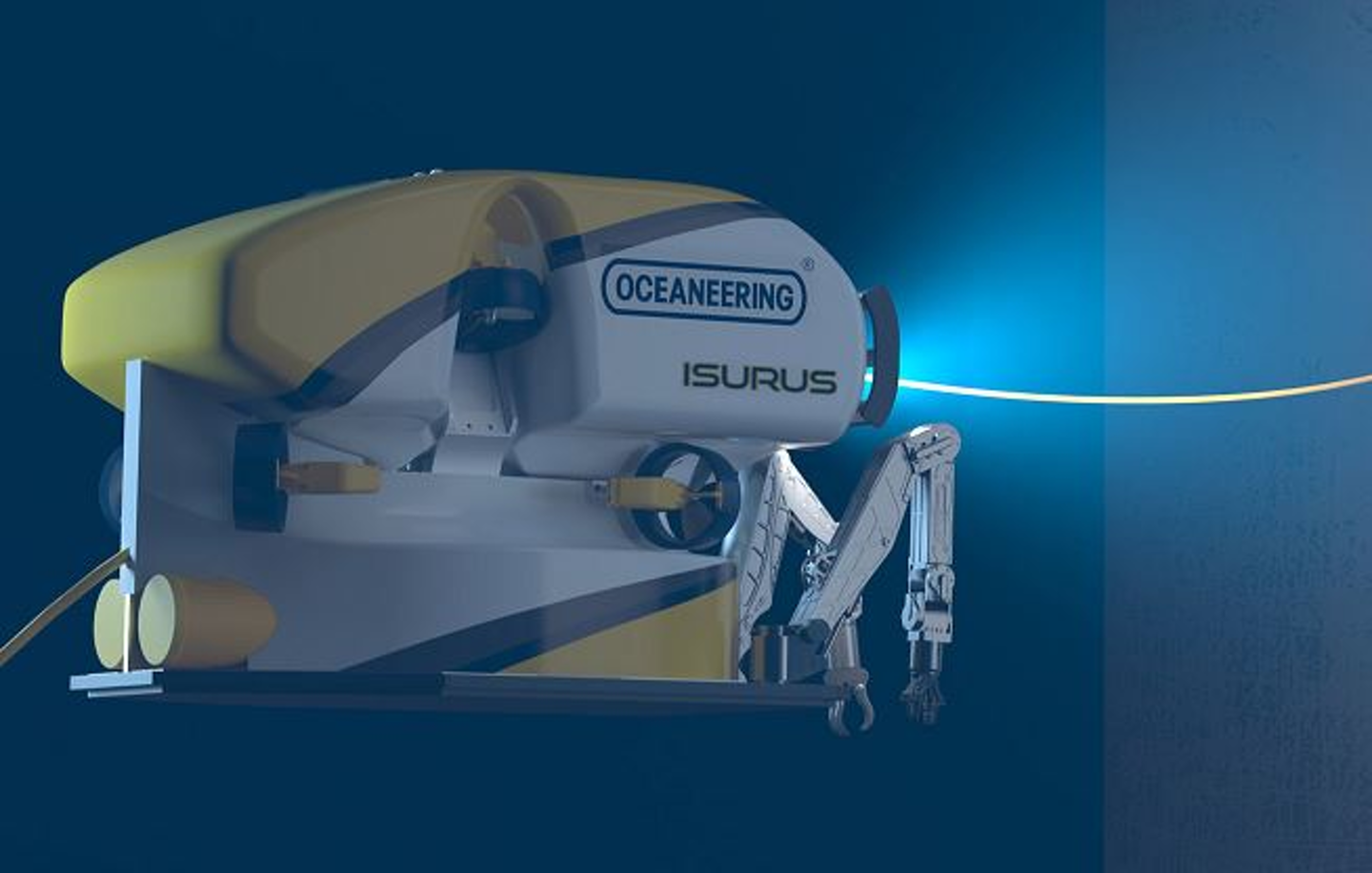Home › Forums › General › General Board › Antarctic deep will be probed by a new ROV
- This topic has 1 reply, 2 voices, and was last updated 17 years, 12 months ago by
Gina McLauchlan.
-
AuthorPosts
-
December 28, 2006 at 3:23 pm #428
deepseacon
ParticipantRobot heading for Antarctic dive
By Rebecca Morelle
Science reporter, BBC NewsIsis will be trawling the depths of Antarctica
The mysteries of the Antarctic deep will be probed by a new vessel capable of plunging 6.5km (four miles) down.Isis, the UK’s first deep-diving remotely operated vehicle (ROV), will be combing the sea-bed in the region in its inaugural science mission.
Researchers hope to uncover more about the effects of glaciers on the ocean floor, and also find out about the animals that inhabit these waters.
The mission begins in mid-January and will last for about three weeks.
While the scientists and engineers begin their long journey to the Antarctic at the start of January, Isis left the UK shores in November and has only just arrived at its destination.
Once unpacked from its containers, the ROV will be placed aboard the British Antarctic Survey’s ship – the RSS James Clark Ross – ready to explore the Marguerite Bay area on the west side of the Antarctic Peninsula.
Diving deep
With Isis, scientists hope to bring the UK to the forefront of deep-sea research.
The submersive vessel, which is based at the National Oceanography Centre (NOC), Southampton, was built in the US in collaboration with the Woods Hole Oceanographic Institution (WHOI). The project cost about £4.5m, and Isis is based on of WHOI’s Jason II remotely operated vehicle.
UK marine scientists can book time on Isis to carry out their research into the deep.
Isis was built to withstand enormous pressure, explained Peter Mason, the Isis project manager at NOC.
It measures 2.7m (9ft) long, 2m (6.5ft) high and 1.5m (5ft) wide, and weighs about 3,000kg (6,600lb) in the air.
Ten kilometres of cable connect it to its "mother ship", allowing scientists to control the vehicle and receive the data it collects in real-time.
On the ROV, Mr Mason said, were lights, cameras to produce high-quality video and still pictures, sonars for acoustic navigation and imaging, and two remotely controlled manipulator arms to collect samples or place scientific instruments on the sea-bed.
Isis, he added, also had extra capacity to carry a range of scientific tools, such as borers, nets etc, so that scientists could tailor the vehicle to their research needs.
Click here to see the ROV
Professor Julian Dowdeswell, director of the Scott Polar Research Institute at the University of Cambridge, is the principal investigator on this three-week-long inaugural research cruise.The environmental history of the Antarctic is held in this sediment
Professor Julian Dowdeswell
He will be using Isis to investigate in fine detail the sea-floor sediments, which have been delivered to Marguerite Bay by the massive ice-sheets that covered the bay about 20,000 years ago.The ROV will be traversing the relatively shallow waters of the bay to the continental shelf edge and then down the steeper continental slope beyond.
"The environmental history of the Antarctic is held in these sediments," he said.
"Using the ROV, we can look at the sea-floor and its sub-surface structure on a very detailed scale."
This will help the researchers better understand the record of past glacial activity in the Antarctic.
Sea creatures
Another project will also be running alongside. Professor Paul Tyler, a deep-sea biologist at NOC, will use Isis to survey the sea creatures of Marguerite Bay.
"I’m interested in the effects of glaciers on the sea-bed and how this affects the fauna – the animals. I’m also interested in how the animal life in Antarctica changes as one goes deeper and deeper into the water," Professor Tyler said.
Spider crabs have been found in Antarctic waters (Image: Noaa)
"Using the real-time imagery from the ROV, we will be able to look at what is happening as it happens, helping us to answer questions such as why some creatures exist at one depth and not another."We are hoping to see a whole bunch of large creatures such as star fish, sea cucumbers, sea fans, sea pens, etc, that inhabit the deep shelf slope and abyssal depths."
He added: "Essentially no-one has explored Antarctica using a ROV at these depths."
After this expedition, Isis will be sent to investigate the deep-sea floor off the Portuguese coast.
Professor Tyler said: "It is great to have this kind of facility in the UK."
the link here
http://news.bbc.co.uk/2/hi/science/nature/6198019.stm#graphicDecember 29, 2006 at 4:32 pm #9757Gina McLauchlan
ParticipantThe photos from the above news item…
Source:

The ROV itself (Image: National Oceanography Centre)…

The location of the study (Image: BBC)…

The Spider crabs found in Antarctic waters (Image: Noaa)

-
AuthorPosts
- You must be logged in to reply to this topic.



